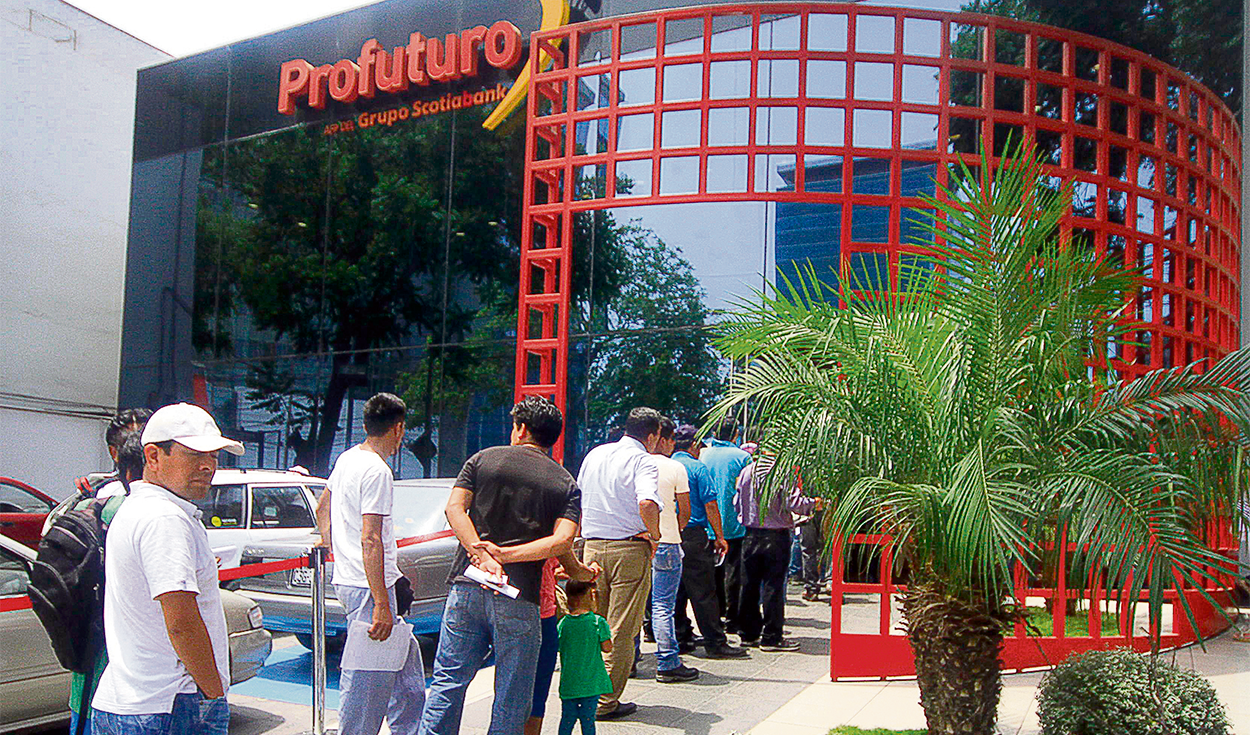
The president of the Association of Private Pension Fund Administrators (AAFP), Giovanna Prialé, recognized that one of the “structural failures” What the model, established 30 years ago in Peru, currently has is the right to a minimum pension for members belonging to this scheme.
“We have had structural failures; The first is the minimum pension. The Private Pension System was never created with a minimum pension, so that a person, no matter how much they contributed for 20 years, did not have the right to the pension that they do have in the public system,” admitted the union representative during her participation in the Congressional Economic Commission.
The head of the AAFP indicated that, unlike the National Pension System (SNP) —administered by the ONP—, the AFPs cannot guarantee a proportional pension of S/250 for a minimum of 10 years of contributions, since the pensions In the current private model, they are based on the funds accumulated in the individual capitalization accounts of each affiliate plus the profitability generated.
“In the private system, a person who contributed for 10 years, but has a low remuneration, does not reach a minimum pension because this right is not contemplated by the Private Pension System, and these are original flaws,” Prialé Reyes said.
It is important to mention that, according to information from the Superintendency of Banking, Insurance and AFP (S.B.S.), more than 10,000 AFP retirees receive up to S/500 in pension. Even around 1,000 older adults get less than S/100.
Given this, the AFP union commented that this original failure must be evaluated so that it can be corrected in the pension reform to be debated in Parliament.
Minimum pension with the Public Treasury
Faced with this problem, the Executive Branch proposes that a special proportional or minimum pension be guaranteed in the private system. This would occur with resources from the Public Treasury.
According to the proposal, AFP members who have contributed for at least 10 years and their pension funds do not guarantee them a special proportional pension – which would be S/300 – will be benefited with the required financing through a state guarantee. , which will be in charge of the ONP.
The only ones who would not be able to access this benefit would be those AFP members who have made a withdrawal from their pension savings and have not previously returned said funds.
For Noelia Bernal, economist and researcher at the Research Center of the Universidad del Pacífico (CIUP), what the Government proposes would demand many resources from the Public Treasury.
“It strikes me that the Ministry of Economy proposes such a fiscally costly measure that ultimately benefits a relatively small group of people who are already formal workers, many of whom have withdrawn their money and are already affiliated with a system.” , commented the teacher.
According to Government estimates, the State’s expenditure to grant these pensions until the payment of the total obligation for current AFP members has been exhausted It would be S/1,332 million per year on average.
Reactions
Noelia Bernal, economist
“It is being proposed that those affiliated with the Private Pension System who do not reach a minimum pension, nor a proportional pension, the State will give them the difference. “That is very expensive.”
Giovanna Prialé, president of the AAFP
“The Private Pension System was never created with a minimum pension. A person, no matter how much they contributed for 20 years, did not have the right to the pension that they do have in the public system.”
Figures
- S/300 proposes increasing the proportional pension for those who contribute 10 years.
- 9.1 million members have the Private Pension System.
Source: Larepublica
Alia is a professional author and journalist, working at 247 news agency. She writes on various topics from economy news to general interest pieces, providing readers with relevant and informative content. With years of experience, she brings a unique perspective and in-depth analysis to her work.












